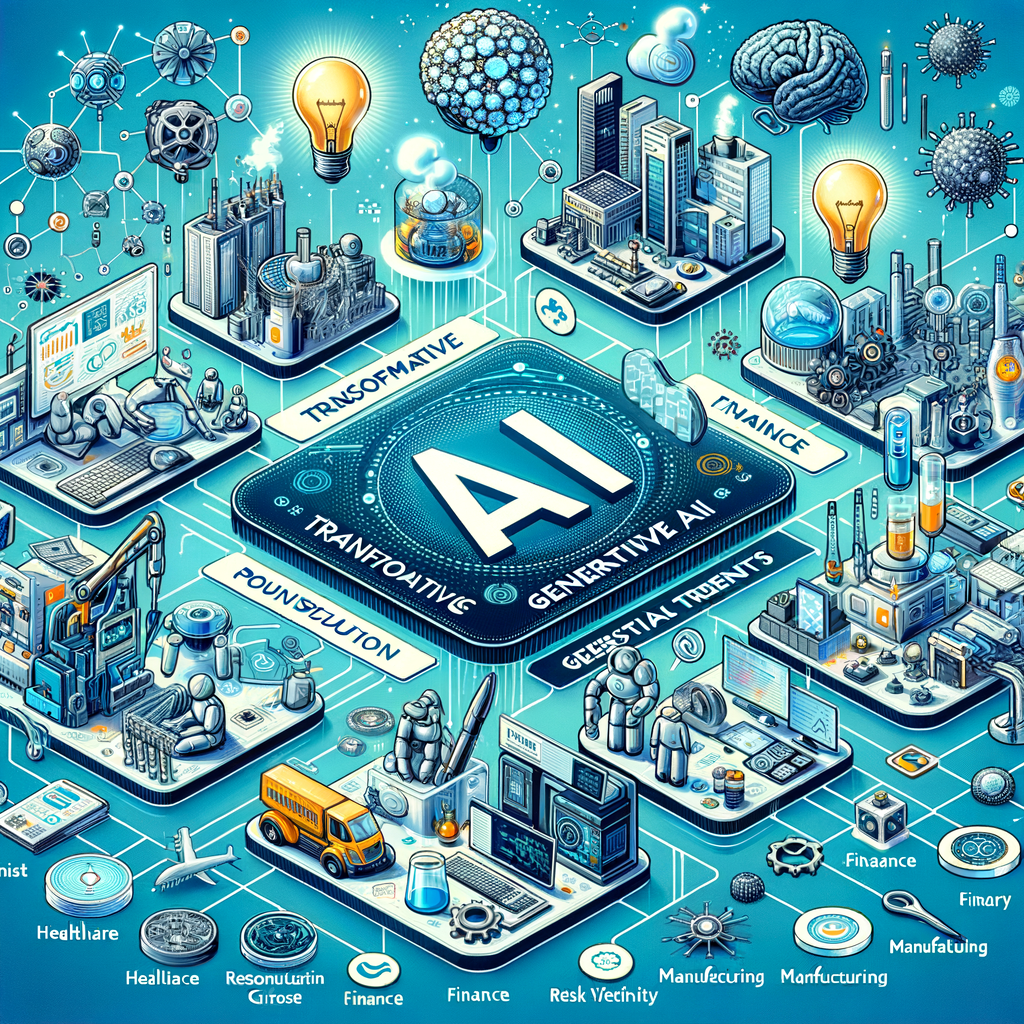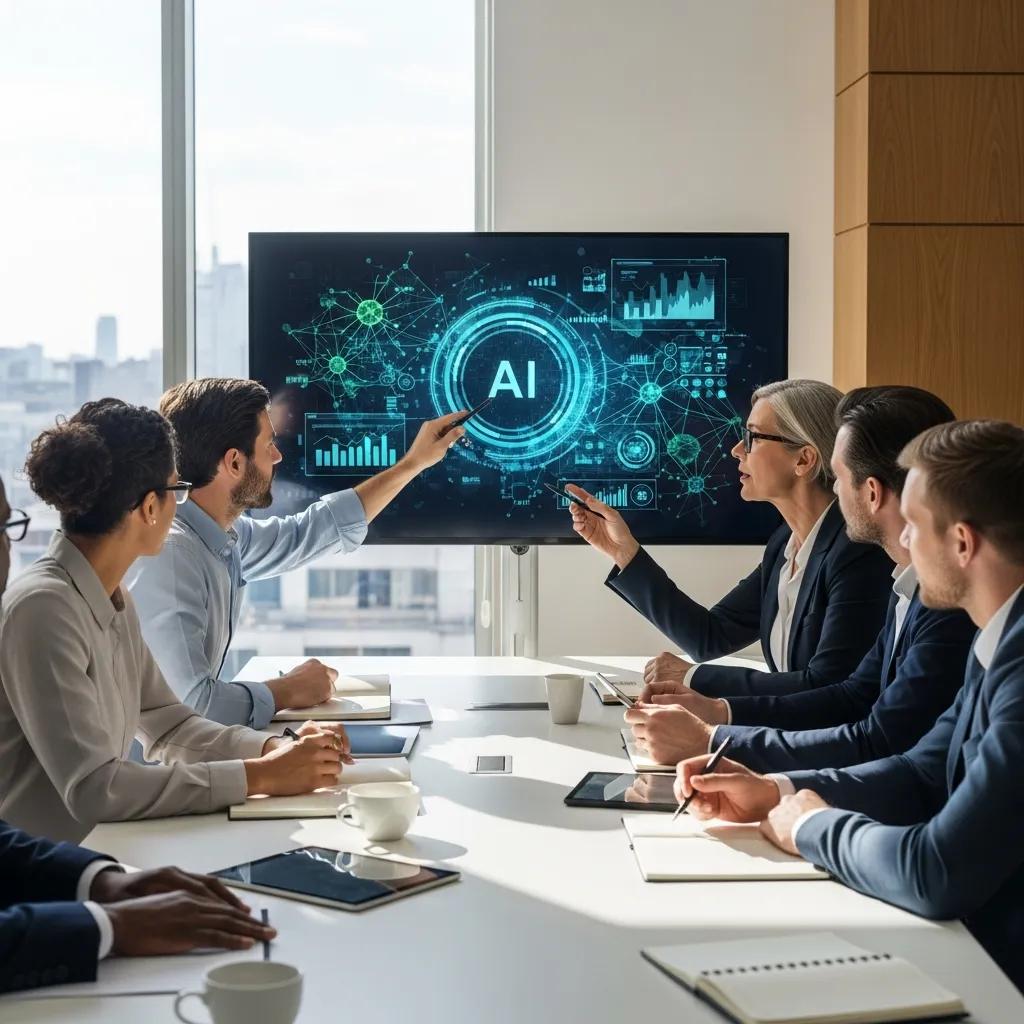Generative AI is rapidly changing how businesses operate across diverse industries. This exploration of generative AI use cases by industry offers insights into this transformative technology’s real-world applications.
Generative AI use cases by industry refer to the specific applications of generative AI within different sectors. These applications can automate tasks, boost efficiency, and spark innovation, ultimately enhancing productivity. They offer benefits such as streamlined manufacturing operations, amplified marketing, accelerated R&D, and exceptional customer experiences. Generative AI tools play a pivotal role in these advancements.
Generative AI Use Cases by Industry
Generative AI transforms business operations, from streamlining processes to opening new creative avenues. Let’s explore practical applications in specific industries.
Software Development
Generative AI revolutionizes software development by improving developer productivity. McKinsey reports that generative AI enables engineers to code up to twice as fast, reducing time spent on tasks. It automates documentation creation and bug detection, aided by platforms like GitHub Copilot, Tabnine, and Code Snippets AI.
Marketing and Media
Generative AI is improving content creation within marketing. Capgemini notes 48% of executives see it as crucial for marketing success, enhancing content generation. Gartner projects that by 2025, generative AI models will create 30% of outbound marketing from large companies.
Platforms like Jasper AI, Canva, and Runway empower personalized marketing and efficient video content creation. This frees marketers to strategize while AI handles repetitive tasks.
Healthcare
AI use cases are rapidly changing healthcare. They enable the creation of virtual assistants for answering patient questions and scheduling appointments. AI facilitates data generation to improve patient care and streamlines operations.
AI is creating new pathways in medicine. It allows analysis of patient interactions and predicts potential drug formulations. This saves valuable time and resources. Companies like Paige, Insilico Medicine, and Iambic are at the forefront of generative AI in healthcare. Medical data analysis and processing are made more efficient with AI systems.
Finance and Risk Management
In 2023, consumers lost over $10 billion to fraud, highlighting the need for improved risk management. AI tackles fraud detection by identifying anomalies and generating personalized financial advice.
AI improves credit decisions and personalizes investment strategies. By 2030, the use of AI chatbots in banking could reach $6.83 billion, showcasing AI’s growth potential in finance. AI algorithms can also assist with anomaly detection within financial systems. Analyzing historical financial data is key for better investment decision-making.
Manufacturing
Predictive maintenance powered by AI offers substantial savings for businesses of all sizes, from 10-15% for larger corporations to significant benefits for smaller companies. Companies like Altair, Autodesk, and Pecan AI offer AI-driven solutions.
These tools empower businesses to leverage generative AI in supply chain management and inventory management, regardless of their size. Demand forecasting is also being impacted with these tools as they are powered by advanced machine learning models.
Customer Interaction and Support
Consumers seek personalized recommendations and offers, driving demand for quality control. Generative AI personalizes customer experiences and improves interactions. Gartner’s research indicates that 50% of client care organizations plan to use AI virtual assistants by 2026.
FAQs about Generative AI Use Cases by Industry
Which industry uses generative AI the most?
As of 2023, marketing, advertising, technology, and consulting sectors are leading generative AI adoption. They leverage AI for new product development. For instance, NVIDIA’s AI-powered Clara platform and BioNeMo are specifically designed for drug discovery.
What are some of the main use cases for generative AI?
Generative AI has many applications including creating content (articles, code, scripts, music), and translating languages. It also produces visuals and audio, like images, video clips, and voiceovers.
Furthermore, generative AI learns from website data to improve job performance. These applications cater to both personal and business needs, offering diverse benefits. Natural language processing enables many of these applications. Synthetic data is being used by various AI companies as a basis for improving accuracy in various business applications.
Which industry uses AI the most?
AI adoption is high in marketing, advertising, tech, and consulting, but other sectors like finance and manufacturing are catching up. According to Grand View Research, the global AI market is predicted to reach over $1 trillion by 2030, highlighting AI’s rapid growth.
How is Gen AI used in industry?
Generative AI serves multiple functions across diverse industries. It helps with coding in tech, personalized campaigns in marketing, clinical analysis in healthcare, and fraud detection in finance. It contributes to innovative designs in manufacturing and personalized customer interactions in retail and support roles. Content creation is a common generative AI task being used in numerous fields. Product descriptions are often made by generative AI for marketing use cases. Artificial intelligence combined with social media is often used to create content for marketers and their products.
Exploring the Future of Generative AI
Generative AI use cases by industry are diverse, from automating tasks to facilitating major advancements. It’s transforming businesses by freeing employees from tedious tasks, allowing them to focus on more strategic problem-solving.
The generative AI landscape is rapidly expanding, making it essential for organizations to stay current. Whether new to AI or seeking an edge, understanding practical use cases is critical in today’s competitive landscape.



